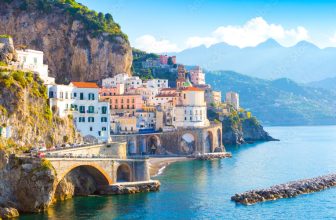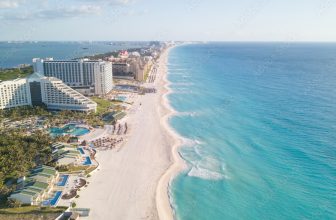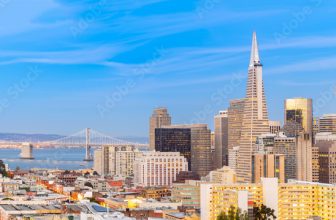
The capital of Tuscany, Florence is one of Italy’s most fascinating cities. This city boasts numerous masterpieces of Renaissance art. See the terracotta-tiled dome of the Florence Cathedral and the bell tower of Giotto. The Galleria dell’Accademia contains Michelangelo’s David and the Uffizi Gallery showcases works by Botticelli and da Vinci. The city’s artistic heritage is rich and varied, and its food is some of the best in the world.
St. Minias was a martyr in Florence
Florence’s first Christian martyr, St. Minias, is the patron saint of the town. The city honors his memory with the church of San Miniato al Monte, a hilltop monastery dedicated to him. While serving in the Roman army, Minias fought for the Christian cause. Today, you can visit the church to learn about his life and the early Christian church. Here are some interesting facts about him:
The story of St. Minias is a fascinating one, but there are few solid sources for it. This Armenian prince had fought in the Roman army under Decius, but became a hermit after refusing to worship the pagan gods. In 250 AD, he was brought before the emperor Decius, who was also persecuting Christians at the time. Because of his refusal to worship the pagan gods, he was killed. According to legend, St. Minias’s head was picked up after his decapitation.
The Basilica di San Miniato al Monte stands on the highest point of Florence, and is considered one of the finest examples of Romanesque architecture in all of Tuscany. Dedicated to the memory of Saint Minias, this church is the first Christian martyr in Florence. The Armenian prince, who was forced to become a Christian, was persecuted by the Roman Emperor Decius and was beheaded. His head was then taken back to his hermitage.
The Medici family controlled Florence
The Medici family controlled Florence for over four hundred years. The Medici family rose to prominence in the wool trade during the early 14th century. They traded wool with Spain and France. The Medicis were present in many government institutions in Florence, but were less well-known than the Albizzi and Strozzi families. One of their sons, Salvestro de’ Medici, was a speaker in the woolmakers’ guild during the Ciompi revolt of 1378-82. Nevertheless, his death was untimely, and his son Lorenzo was eventually exiled from Florence and banned for twenty years.
The Medici family had a strong banking system, which enabled them to control Florence’s economy. They built foundations in banking and manufacturing, including franchises. This gave them economic power and allowed them to promote their humanist culture. As the Medici family continued to rise to power, their influence expanded beyond Florence. Their bank, which was known as the Medici Bank, became one of the most powerful in Europe.
The Medici family gained political power in Florence around 1434. The first Medici ruler of Florence, Cosimo de’ Medici, also became the first pope. In the course of their rule, they also produced four popes. The Medici genes were interwoven into many royal families in Europe. The Medicis controlled Florence until the 16th century. But before that, the family’s influence was waning.
The city was a republic during the anti-Christian persecutions of the Emperor Decius
The Roman Empire’s anti-Christian persecutions were widespread, beginning with Nero (r. 54-68) in Rome. The persecution was generally renewed under the reigns of Marcus Aurelius (161-180) and Decius (r. 251-253), but the Decian persecution was particularly brutal. Luckily, it was stopped by Gallienus and Valerian (r. 253-260), who brought relief to the Christian people of Florence.
In the early fifth century, Christians were considered “gentiles” by the Roman Empire. According to this view, if they didn’t worship pagan gods, bad things would happen to them. This belief led many pagans to accuse Christians of causing disasters. Nevertheless, Tertullian, the governor of the province, complained about the widespread misperception that Christians were the cause of disasters.
In the midst of the anti-Christian persecutions of the Emperor, Florentine Christians sought to end the conflict by uniting the nation as a republic. However, not all Catholics were in agreement. Among the many political and religious leaders who favored conciliation: Cardinal Giacomo antonelli, Giambattista Casoni, Niccolo Tommaseo, Antonio rosmini-serbati, Luigi tosti, and Bishop Geremia bonomelli.
The anti-Christian persecutions of the Emperor Decisus had a profound effect on the culture of the city. As a result, many of the cathedral clergy were accused of having worldly lives and of having no faith in Christianity. The anti-clericalism reached its peak during jurisdictional conflicts, and religious unrest flourished among the poorer classes of the population.
The Mafia set up bombings in Rome, Florence and Milan
The Mafia set up bombing attacks in Rome, Florence and Milan in 1992 to target politicians and their families, according to new evidence. The Sicilian mafia was behind the bombings in those cities. The Italian mafia is a criminal organization that has carried out a number of violent attacks in recent years, including a bombing in Brindisi that killed nine people. In 1992, the Mafia set up bombings in Rome, Florence, and Milan, killing at least 23 people.
The Italian government and the Mafia were the primary targets in these attacks. In October 1998, two bombs were planted at a police station, but neither exploded. Another bomb, a bottle of flammable liquid, was found in the city in summer 1999. The Mafia claimed responsibility for the failed attack. Other attacks targeted journalists, magistrates, and politicians.
The investigation into the 1993 bombings was carried out by Italian police, and evidence was found that the Mafia set up the attacks. Confidential information gathered by local authorities confirmed the Mafia’s involvement in the bombings. In addition to this, it was discovered that recognised members of the “Cosa Nostra” had stayed in a Florentine hotel on the night of the bombing. The theft of a Fiorino from a parallel street also raised suspicion.
Michelangelo’s work is on display at the Uffizi Gallery
A painting of Michelangelo’s work is the only thing on display in Florence. The Uffizi Gallery is home to “Doni Tondo,” Michelangelo’s most famous painting, which depicts the Holy Family in sculptural style. The work was commissioned by Florentine merchant Agnolo Doni. It was painted during Michelangelo’s early years and shows his interest in anatomy.
Venus on a seashell is one of the world’s most famous paintings and was inspired by Ovidius’ Metamorphosis. The figure is sitting naked on a shell and is being helped to dress by her Maid Ora. The painting contains a flower called violet, which is associated with modesty. You can spend an entire day admiring this magnificent sculpture.
The Doni Tondo is a piece of art that demonstrates Michelangelo’s unusual style. The bright colors in this work anticipate the later Mannerist style. In addition to sculpting women like men, Michelangelo also made them look like muscled men. Mary’s right bicep is reminiscent of Rosie the Riveter. The Santo Spirito, also known as Moses Defending the Daughters of Jethro, holds a 1.4-meter polychrome crucifix by Michelangelo.
The David statue, considered the most beautiful statue ever carved, is Michelangelo’s masterpiece. It was commissioned by the Vatican to be displayed in a chapel in St. Peter’s Basilica. It is a tragically beautiful statue, made of soft stone and featuring the face of Mary. Another important piece of Michelangelo’s work is the Pieta Bandini, which is on display in the Museo dell’Opera in the Duomo. This sculpture is considered his most famous piece and is 17 feet high. It became the symbol of Florence.
Shopping in Florence
If you’re looking to shop in the city, Florence’s historic centre offers plenty of options. A number of international designer labels have storefronts along Via Tornabuoni, as well as a number of independent boutiques which carry on centuries-old artisan traditions. In addition to international brands, Florence also has a large number of prestigious Italian boutiques. Here you can find the latest in Italian fashion. However, if you’re in the market for something a bit cheaper, you can also explore the city’s high-street brands.
One of the oldest traditions of Florence is book binding. The city’s independent bookstores sell an excellent selection of books containing traditional Italian and foreign language texts. Books bound in leather can be a great souvenir for any bookworm. The best way to buy books in Florence is to purchase a souvenir at one of these boutiques. Many of the items are cheap and can be taken home with you as a memento of your trip.
The city has a great selection of boutiques, from small shops in the medieval center to large shopping malls with world-famous brands. There is shopping for every taste in Florence. For the refined shopper, Via Tornabuoni and Via della Vigna Nuova are the places to shop. And if you’re looking for designer goods, you’ll find some of the best in Italian and international designers in the Santa Maria Novella district.






